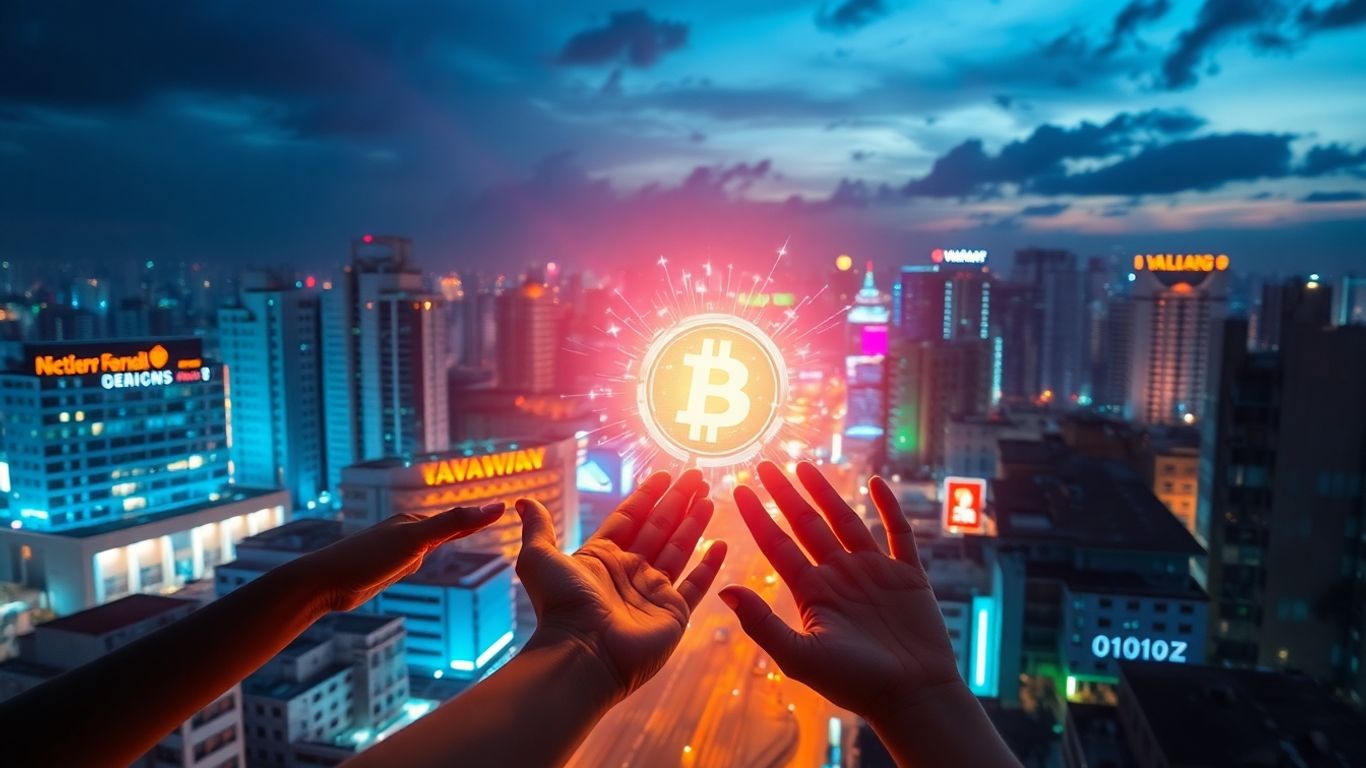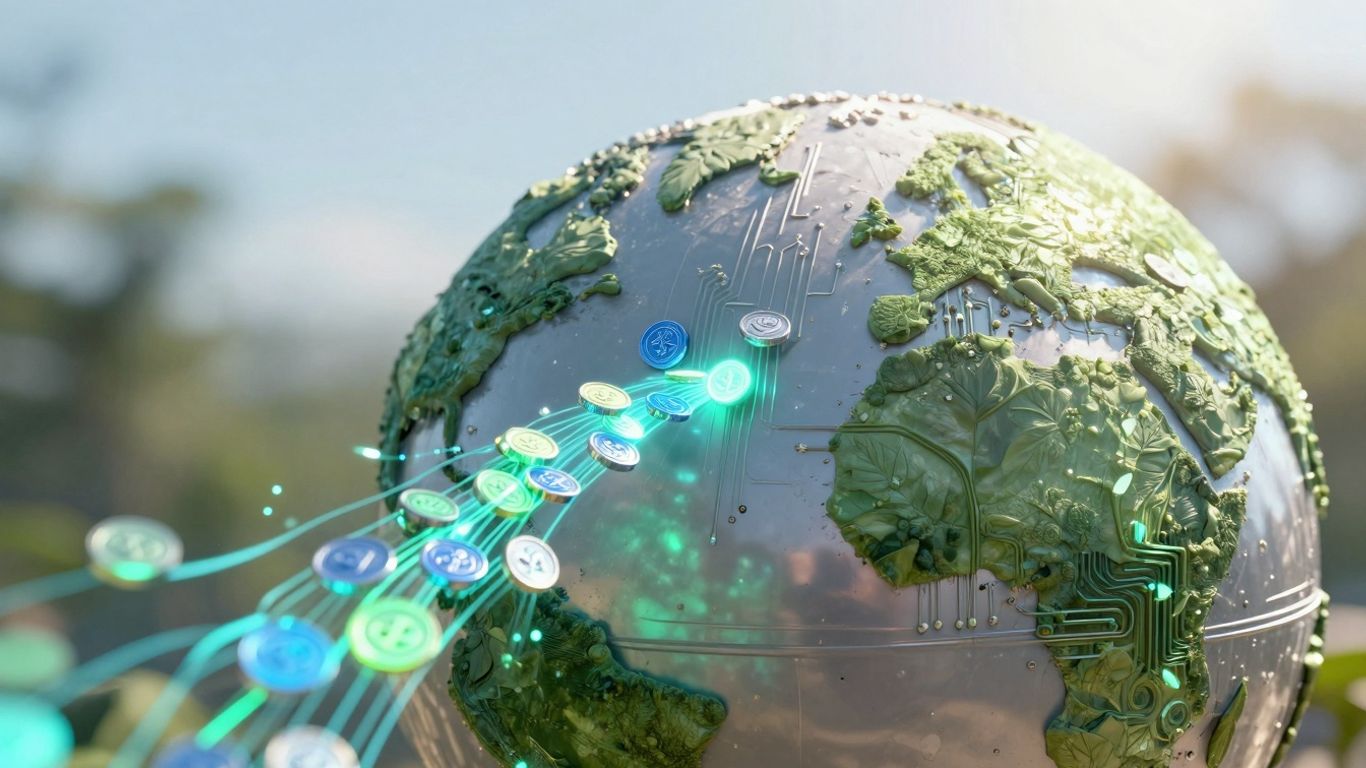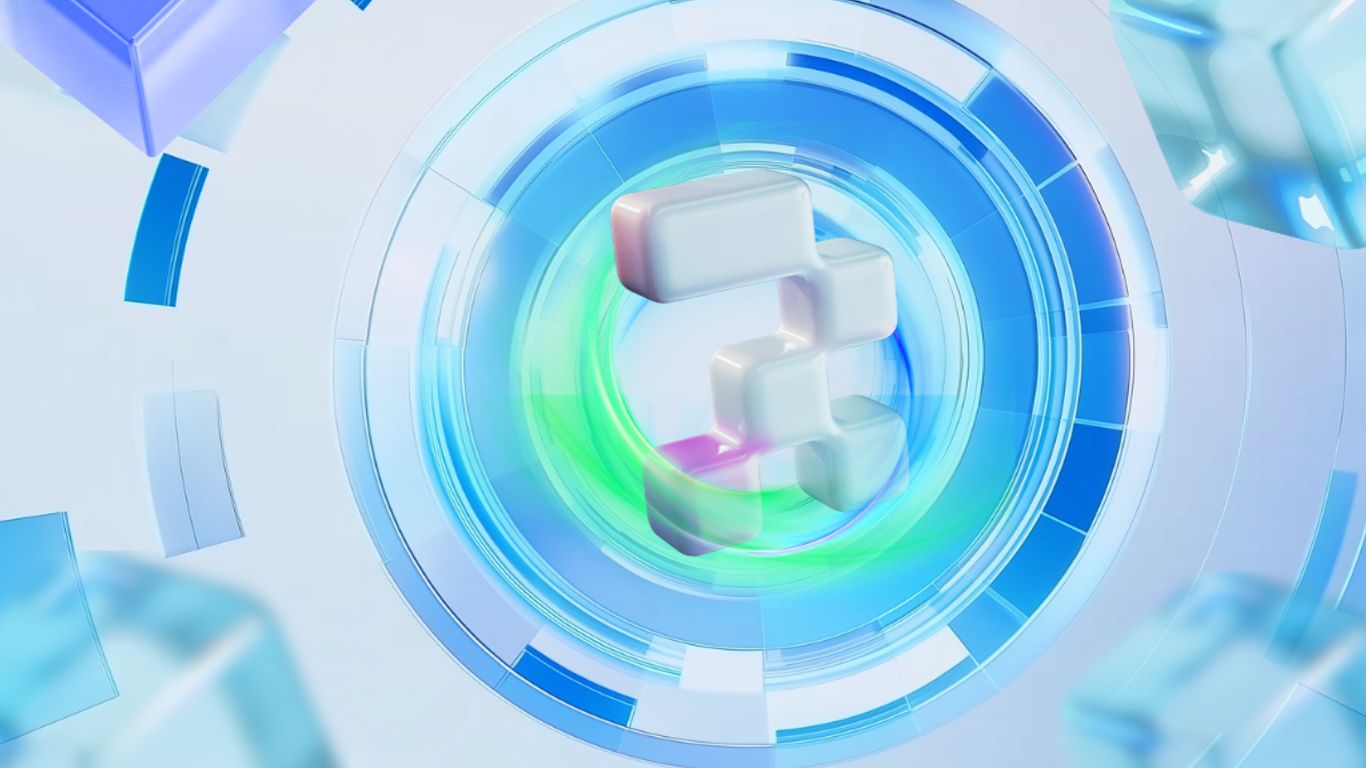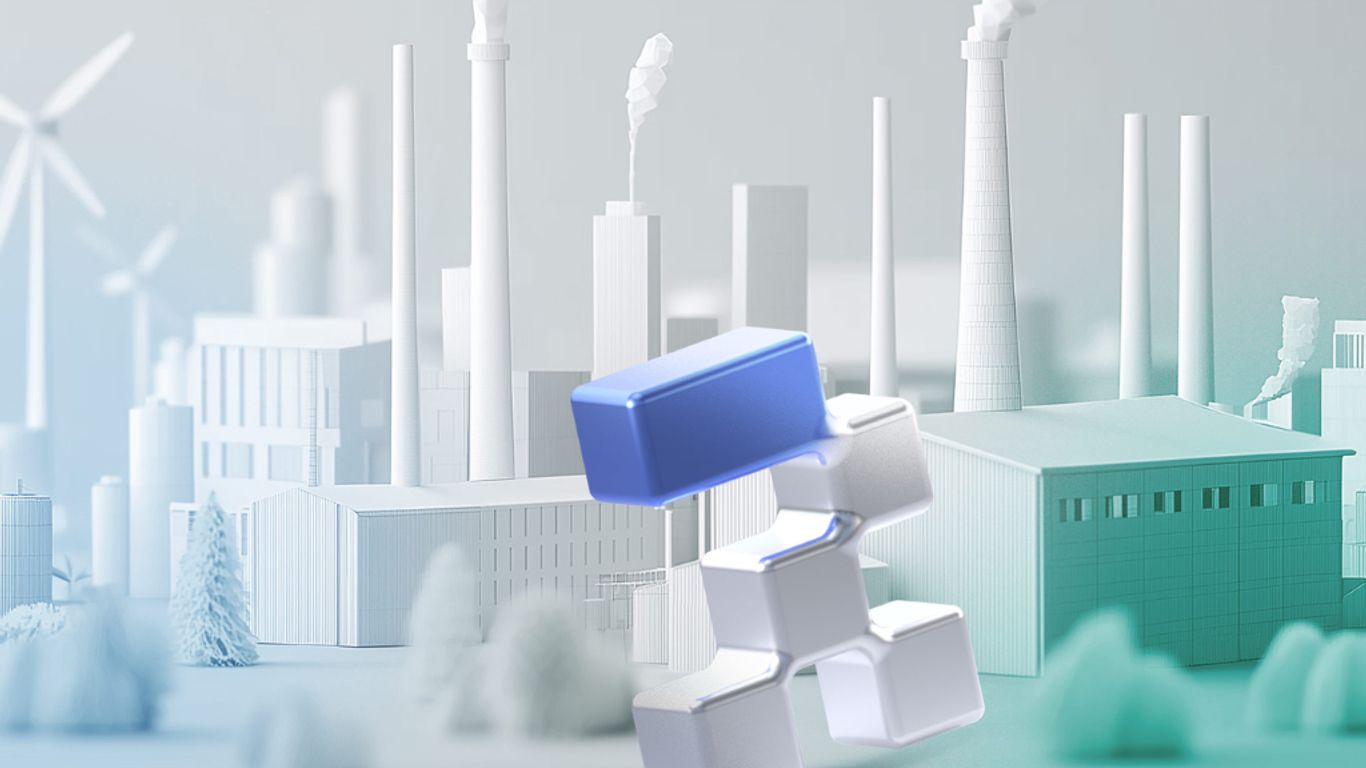You know, it's pretty interesting how developing countries are starting to use this thing called asset tokenization. It's basically a way to turn real-world stuff, like land or natural resources, into digital tokens on a blockchain. This whole process can make it easier for people to invest, trade, and manage these assets, especially in places where things have traditionally been a bit tricky to deal with. We're seeing some really creative ways this is being used, from helping out local communities to trying to protect the environment. Let's take a look at how tokenization in emerging markets is shaking things up.
Key Takeaways
- Tokenization can make it simpler for more people to invest in things like land or natural resources, which were often hard to access before.
- Turning assets into digital tokens can make them easier to trade and sell, especially things like property that don't move easily.
- Using blockchain for tokenization can cut down on fees and make transactions faster and more open.
- There are real risks like digital access issues and the chance that only a few powerful people benefit, which need careful attention.
- Tokenization offers a way to connect local projects and resources to a wider group of investors globally, potentially bringing in more money for development.
Unlocking Value Through Tokenization in Emerging Markets
It's pretty wild how quickly things are changing in the world of finance, especially for developing countries. For ages, people in these regions have had assets that were just sitting there, not really doing much for them financially. Think about land, or even rights to natural resources. These things have real value, but getting that value out into the wider economy? That's been a huge hurdle. Traditional finance systems often leave a lot of people out, requiring big chunks of money or complicated paperwork that just isn't accessible.
Democratizing Investment Access
This is where tokenization starts to look really interesting. By breaking down big, expensive assets into smaller, digital pieces – tokens – you can let way more people get involved. It’s like selling a whole building by the slice instead of making someone buy the whole thing. This means someone who might only have a few dollars can now own a tiny piece of something that was previously out of reach. It opens the door for local communities to invest in projects happening right in their own backyard, or for small investors to get a piece of the action without needing a fortune.
- Lowering the entry bar: Small investments become possible.
- Wider participation: More people can join in.
- Local capital growth: Money stays and circulates within the community.
The idea is to move away from systems where only the already wealthy can invest, and create a more open playing field for everyone.
Enhancing Liquidity for Illiquid Assets
Lots of assets in developing economies are what you'd call 'illiquid'. This means they're hard to sell quickly or easily. Real estate is a prime example. You can't just sell a house or a plot of land in a day. But when you tokenize that property, you create digital tokens that represent ownership. These tokens can then be traded on digital exchanges. Suddenly, that property isn't stuck anymore. People who own these tokens can sell them to others, making it much easier to get cash out of an asset when they need it. This also makes the asset more attractive to potential buyers because they know they can likely sell their token later if they want to.
Streamlining Transactions with Cost Efficiency
Traditional financial deals often involve a lot of middlemen – banks, lawyers, brokers. Each one takes a cut and adds time and complexity. Tokenization, especially when built on blockchain, can cut out many of these intermediaries. Smart contracts, which are like self-executing agreements, can handle things like payments and ownership transfers automatically once certain conditions are met. This can significantly reduce the fees and the time it takes to complete a transaction. For developing countries, where transaction costs can be a major barrier, this efficiency can make a big difference in getting projects off the ground and making sure more of the money actually goes to its intended purpose, not just to fees.
Tokenizing Natural Capital for Sustainable Development
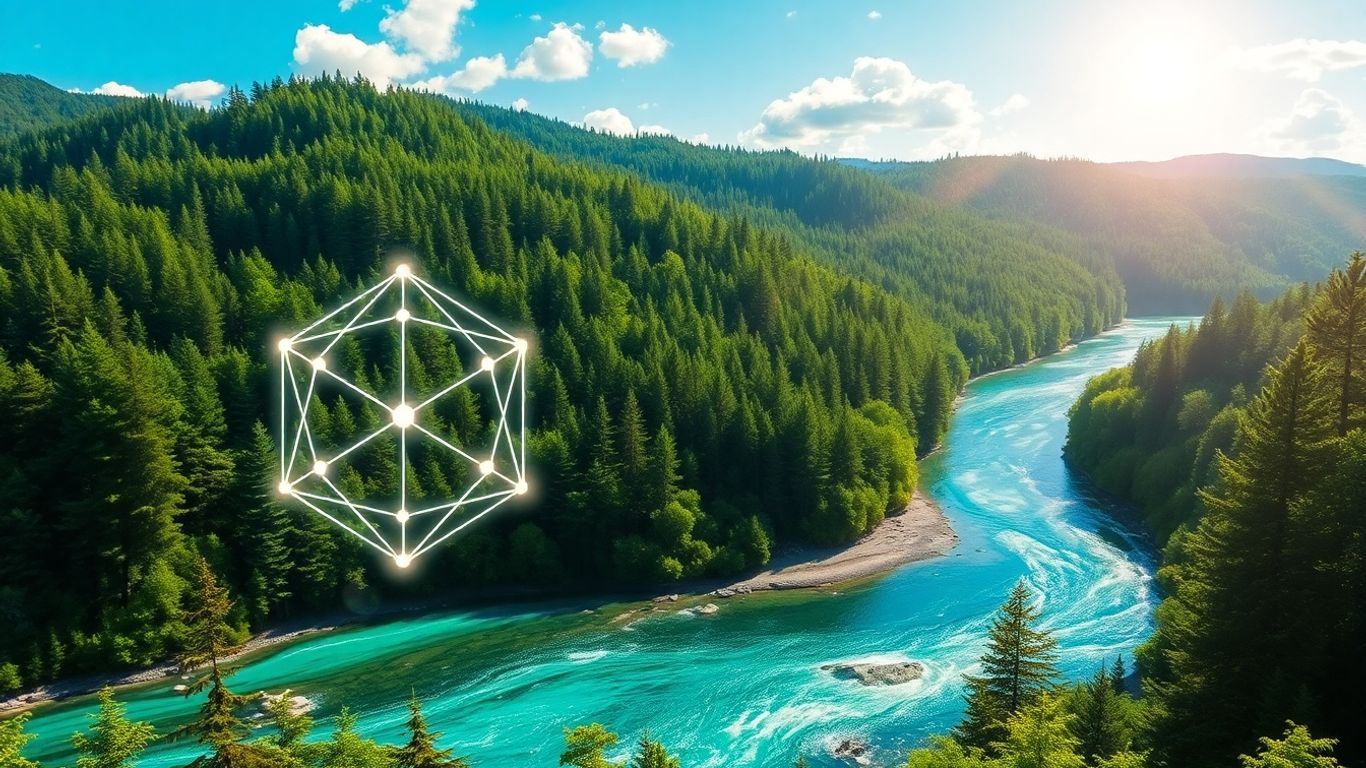
Empowering Indigenous Communities with Resource Sovereignty
Think about it: for ages, indigenous communities have been the stewards of vast natural resources, often with little to show for it financially or in terms of control. Now, asset tokenization is starting to change that story. By turning things like forests, clean water sources, or biodiversity into digital tokens, these communities can get a direct stake in the value they help protect. It’s like giving them a digital deed, but for the ecosystem itself. This means they can potentially earn from conservation efforts, like carbon sequestration or protecting endangered species, right from their own lands. This shift aims to put resource control back into the hands of the people who know the land best. It’s a way to recognize their traditional knowledge and give them a real say in how their natural heritage is managed and valued.
- Direct Financial Benefits: Communities can receive payments for ecosystem services they provide, like clean air or water.
- Enhanced Land Rights: Tokenization can create a verifiable record of ownership and stewardship, strengthening their claims.
- Self-Determination: Local control over how natural assets are managed and tokenized increases autonomy.
The idea is to move away from external entities profiting from local natural resources without fair compensation or involvement of the original custodians. It’s about creating a more equitable system where the people living on and protecting the land benefit directly from its preservation.
Facilitating Conservation Finance Through Fractional Ownership
Getting money for conservation projects in developing countries has always been tough. Traditional grants and loans don't always cut it. Tokenization offers a new angle. Imagine a large rainforest or a coral reef. Instead of needing one massive investor, tokenization allows this natural asset to be broken down into tiny digital pieces, or tokens. People from all over the world, even with small amounts of money, can buy these tokens. This fractional ownership means more people can invest in conservation, spreading the risk and bringing in a wider pool of funds. It makes conservation projects more accessible to a broader range of investors, not just the super-rich or big institutions. This can lead to more projects getting funded and a greater collective effort towards protecting our planet.
Mitigating Climate Risks with Innovative Insurance Models
Climate change brings a lot of risks, especially for developing nations. Think floods, droughts, or crop failures. Tokenization can help create new kinds of insurance. For example, a community might have a forest that helps regulate rainfall. If that forest is tokenized, its health can be monitored digitally. If climate events threaten the forest, and thus the community’s water supply, smart contracts linked to the tokens could automatically trigger payouts. This means aid or insurance money could arrive much faster than traditional systems, helping communities recover more quickly. It’s a way to use technology to build resilience against the unpredictable impacts of a changing climate, making sure that the value of natural systems is recognized not just for their benefits, but also for the risks they help us avoid.
Addressing Challenges in Tokenization Adoption
While asset tokenization holds a lot of promise for developing economies, it's not exactly a walk in the park. There are some pretty big hurdles to clear before everyone can jump on board and start benefiting. We're talking about real-world problems that need practical solutions.
Navigating Legal Complexities of Land Rights
This is a big one. In many developing countries, land ownership isn't always clear-cut. Traditional systems might have communal rights, or records might be missing or disputed. When you try to tokenize land, you need to know exactly who owns it and has the right to sell or use it. If the legal framework isn't solid, tokenization can get tangled up in disputes, causing delays and making people feel like their rights aren't respected. It's like trying to build a house on shaky ground – it's just not going to end well.
Bridging the Digital Divide for Inclusive Participation
Not everyone has a smartphone or reliable internet access, especially in rural or poorer areas. Tokenization relies heavily on digital technology. If a significant portion of the population can't access the platforms or understand how to use the tokens, they'll be left out. This could mean that the benefits of tokenization only reach a select few, widening the gap between the connected and the unconnected. We need to think about how to make these systems accessible to everyone, not just those who are already digitally savvy.
Preventing Elite Capture and Land Dispossession
There's a real risk that tokenization could benefit the already powerful – either local elites or foreign investors – at the expense of ordinary people. Without strong safeguards, those with more resources might be able to acquire large amounts of tokenized assets, potentially pushing out smaller holders or even taking over land that communities have relied on for generations. This could lead to increased inequality and social unrest. We need to design systems that actively prevent this kind of unfair advantage.
The promise of tokenization is that it can democratize access to assets. However, if not implemented carefully, it can easily become a tool that concentrates wealth and power, mirroring historical patterns of exploitation. Ensuring equitable distribution of benefits and protecting vulnerable populations must be central to any tokenization initiative in these regions.
Global Accessibility and Market Expansion
Connecting Local Assets to Global Investors
Think about it: for ages, if you had a piece of land or a stake in a local business in a developing country, getting someone from, say, Europe or North America to invest was a real headache. You'd need lawyers, banks, lots of paperwork, and even then, it was risky for the foreign investor. Tokenization changes that whole game. By turning real-world assets into digital tokens on a blockchain, you can offer tiny pieces of ownership, called fractional ownership. This means someone with just a few hundred dollars can now buy a piece of a solar farm in Kenya or a coffee plantation in Colombia. It's like opening up a global marketplace for assets that were once stuck behind borders and high entry costs.
Overcoming Geographic and Regulatory Barriers
This isn't just about making it easier to invest; it's about breaking down walls. Traditional finance has all sorts of rules about where investors can put their money, often tied to where they live or what country the asset is in. Blockchains, though, are pretty borderless. While regulations are still catching up, the underlying technology allows for transactions to happen between almost anyone, anywhere. This means a project in a remote village can get funding from a city dweller across the ocean, bypassing a lot of the old gatekeepers. It's still not perfectly smooth sailing, mind you. Different countries have different rules, and that's a hurdle. But the trend is towards finding ways to make these cross-border investments work.
Attracting Diverse Capital for Local Projects
What does this mean on the ground? It means local projects, especially those focused on things like sustainable agriculture or renewable energy, can tap into a much bigger pool of money. Instead of relying only on local banks or a few wealthy individuals, they can attract funds from impact investors worldwide, people who want their money to do good and make a return. This influx of capital can mean the difference between a project staying small or scaling up to make a real impact. It also brings in different kinds of expertise and perspectives from these global investors, which can help local businesses grow even stronger.
The ability to tokenize fractional ownership of natural assets lowers the financial barrier to entry, allowing a broader spectrum of investors, including smaller retail investors and impact funds, to participate. This democratizes conservation finance, enabling individuals worldwide to contribute directly to projects that resonate with their values. Moreover, the increased liquidity provided by digital exchanges offers investors flexibility, making natural capital a more attractive asset class.
Here's a quick look at how this plays out:
- Fractional Ownership: Allows small investments in large assets (e.g., real estate, infrastructure).
- Global Reach: Investors can access opportunities previously unavailable due to location.
- Reduced Intermediaries: Cuts down on fees and speeds up transactions.
- New Funding Avenues: Opens up capital for projects that might struggle with traditional financing.
The Role of Blockchain in Transparency and Security
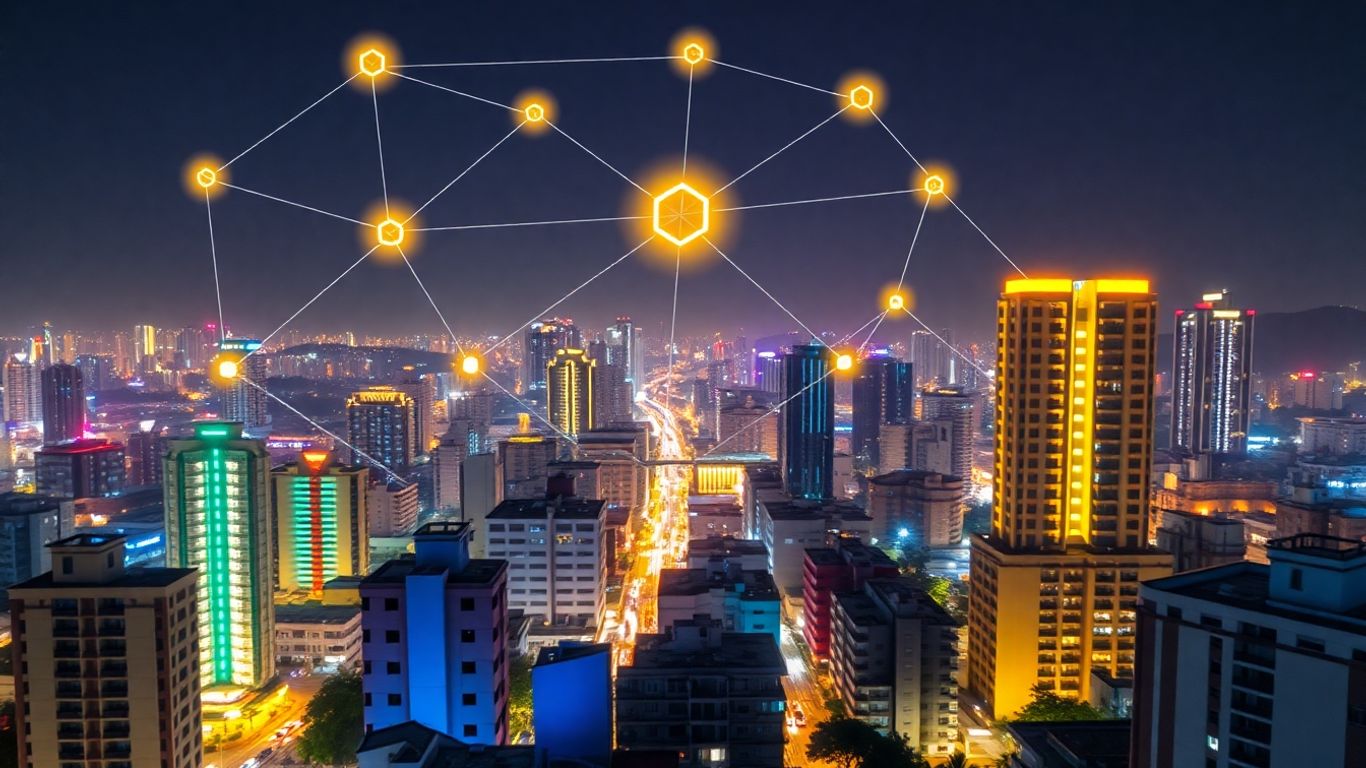
When we talk about asset tokenization in developing economies, especially for things like natural resources, trust is a big deal. That's where blockchain technology really steps in. It's like a super secure digital ledger that keeps track of everything.
Ensuring Auditable and Immutable Transaction Records
Think of blockchain as a shared notebook that everyone can see but no one can erase or change once something is written down. Every time an asset is tokenized, or a transaction happens, it's recorded as a 'block' of data. This block is then linked to the previous one, forming a 'chain'. This makes it incredibly hard to tamper with past records. For developing countries, this means a clear, verifiable history of who owns what and when it changed hands. This is a game-changer for things like land rights, where disputes have been common for ages.
- Permanent Record: Once a transaction is confirmed on the blockchain, it's there forever.
- Shared Visibility: Authorized parties can view the transaction history, reducing the need for intermediaries to vouch for it.
- Tamper-Proof: Cryptographic methods make it nearly impossible to alter or delete past entries.
Building Trust Through Secure Ownership Verification
Because the records are so secure and transparent, it builds a lot of confidence. People can be more sure that the digital token they hold actually represents a real asset and that their ownership is legitimate. This is especially important when dealing with assets that have historically been hard to track or prove ownership for, like forests or water rights. It helps prevent fraud and makes it easier for people to invest or trade these assets.
The digital nature of tokens, backed by blockchain, can provide a level of certainty that traditional paper-based systems often lack. This is particularly relevant in regions where land registries might be incomplete or prone to corruption.
Integrating Compliance Mechanisms for Regulatory Adherence
Blockchain isn't just about security; it can also be programmed to follow rules. Smart contracts, which are self-executing contracts with the terms of the agreement directly written into code, can automatically enforce regulations. For instance, if a token represents a certain amount of carbon credits, a smart contract could automatically ensure that the associated environmental standards are met before any profits are released. This helps make sure that tokenized assets are used in ways that are both legal and beneficial for sustainable development, reducing the risk of greenwashing or misuse of funds.
Future Trajectories of Tokenization in Developing Economies
So, what's next for asset tokenization in places that really need it? It's not just about getting things online; it's about building systems that actually work for people on the ground. We're looking at a future where tokenization isn't just a tech trend, but a tool for real change.
Developing Robust Governance Frameworks
This is a big one. Without clear rules, tokenization can go sideways fast. We need frameworks that protect everyone, especially the most vulnerable. Think about it:
- Community Input: Local communities need a real say in how their assets are tokenized and managed. It can't just be outsiders deciding.
- Dispute Resolution: What happens when things go wrong? We need clear, fair ways to sort out disagreements, maybe even using smart contracts for automated resolutions.
- Accountability: Who's in charge? There needs to be a transparent way to track who is responsible for what, so no one can just disappear when problems arise.
Harmonizing International Regulations
Right now, it's a bit of a Wild West out there with different countries having different rules. For tokenization to really take off globally, especially for developing economies wanting to attract outside investment, we need some agreement. Imagine trying to sell a tokenized piece of land if every country has a different law about it. It's a headache.
The goal is to create a global playing field where tokenized assets can move freely, but with safeguards that respect local laws and protect investors. This means cooperation between nations to iron out the kinks.
Integrating Traditional Ecological Knowledge
This is where things get really interesting. Tokenization often focuses on natural resources – forests, water, land. But often, the people who have lived with and managed these resources for generations have a deep understanding that isn't captured in a simple digital token. The future involves weaving this traditional knowledge into the tokenization process itself. This could mean:
- Valuing Indigenous Practices: Recognizing and rewarding traditional methods of conservation and resource management through token incentives.
- Data Integration: Finding ways to represent qualitative, traditional knowledge alongside quantitative data on a blockchain.
- Shared Decision-Making: Ensuring that token governance structures include elders and community leaders who hold this vital knowledge.
It's about making sure that as we digitize assets, we don't lose the wisdom that has kept these resources alive for centuries. It's a complex puzzle, but getting it right could mean a more equitable and sustainable future for everyone involved.
Looking Ahead
So, what does all this mean for developing countries? It's clear that asset tokenization isn't just some tech fad. It's showing real promise in areas like getting more people into the financial system, making it easier to invest in things like land or conservation projects, and even giving communities more control over their own resources. Of course, it's not all smooth sailing. There are definitely challenges, like making sure everyone has access to the technology and that the rules are fair. But the potential for positive change is huge. As this technology keeps developing, we'll likely see even more creative ways it can help build stronger, more inclusive economies around the world.
Frequently Asked Questions
What exactly is asset tokenization?
Imagine taking something valuable, like a piece of land or a building, and turning it into digital tokens on a computer system called a blockchain. Each token represents a small part of that asset. This makes it easier for many people to own a piece of something big and makes it simpler to buy and sell those pieces.
How does tokenization help people in developing countries?
It can make it easier for people to invest in things they couldn't afford before, like property. It also helps make it simpler and cheaper to buy and sell things, and can give communities more control over their own resources, like forests or land.
Can tokenization help protect nature and the environment?
Yes, by turning natural resources like forests into tokens, people can invest in keeping them safe. This can bring in money for conservation and even allow indigenous communities who protect these areas to get paid for their work, giving them more power over their lands.
Are there any downsides or risks to using tokenization?
There can be. Not everyone has access to the internet or the right technology. There's also a risk that only the wealthy or powerful might benefit, or that people could lose their land if things aren't handled carefully. It's important to make sure it's done fairly.
How does blockchain make tokenization secure?
Blockchain acts like a super secure digital ledger that everyone can see but nobody can easily change. This means all the records of who owns what and who bought or sold tokens are safe, clear, and hard to tamper with, building trust in the system.
What does the future look like for tokenization in developing nations?
The future likely involves creating clearer rules and making sure different countries agree on how things should work. It also means finding ways to include everyone, even those without much technology, and making sure these new systems help communities grow and protect their environment fairly.

